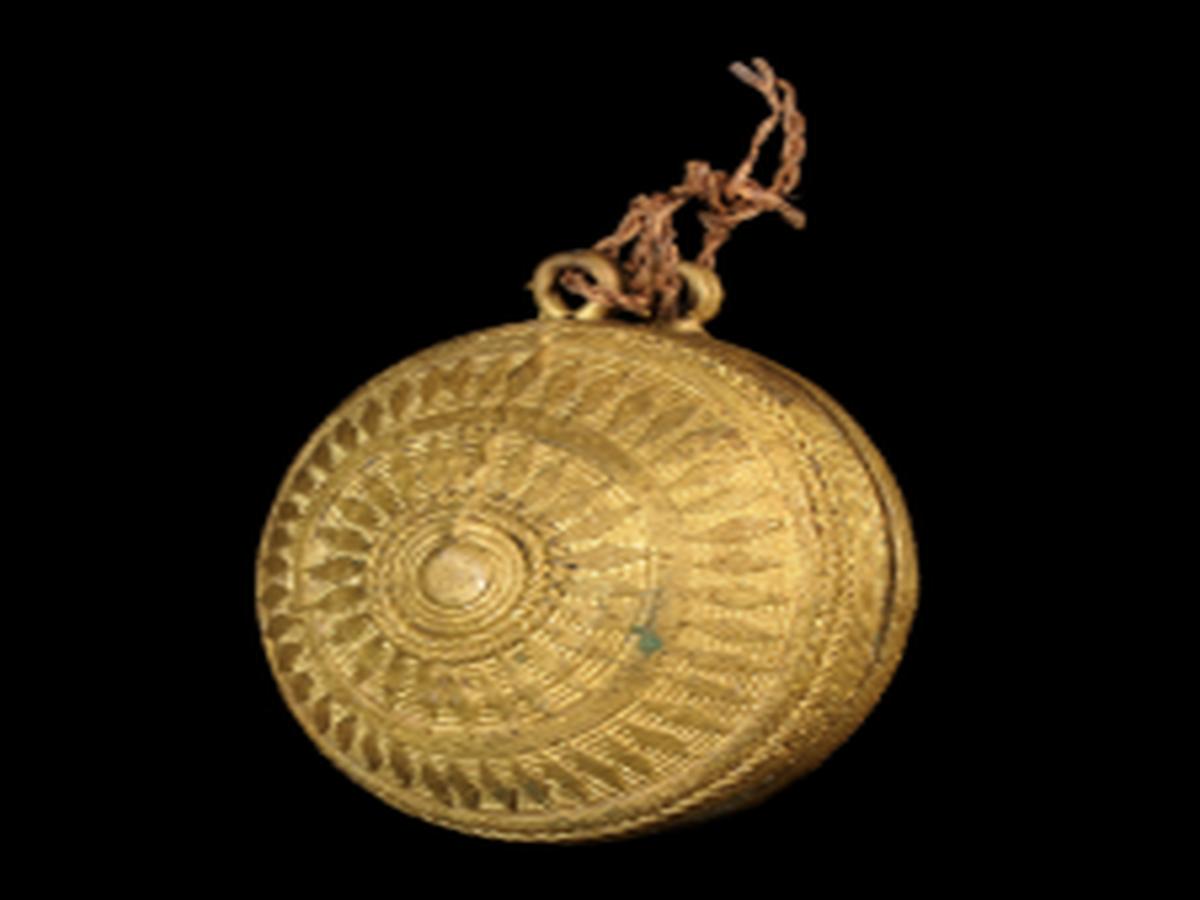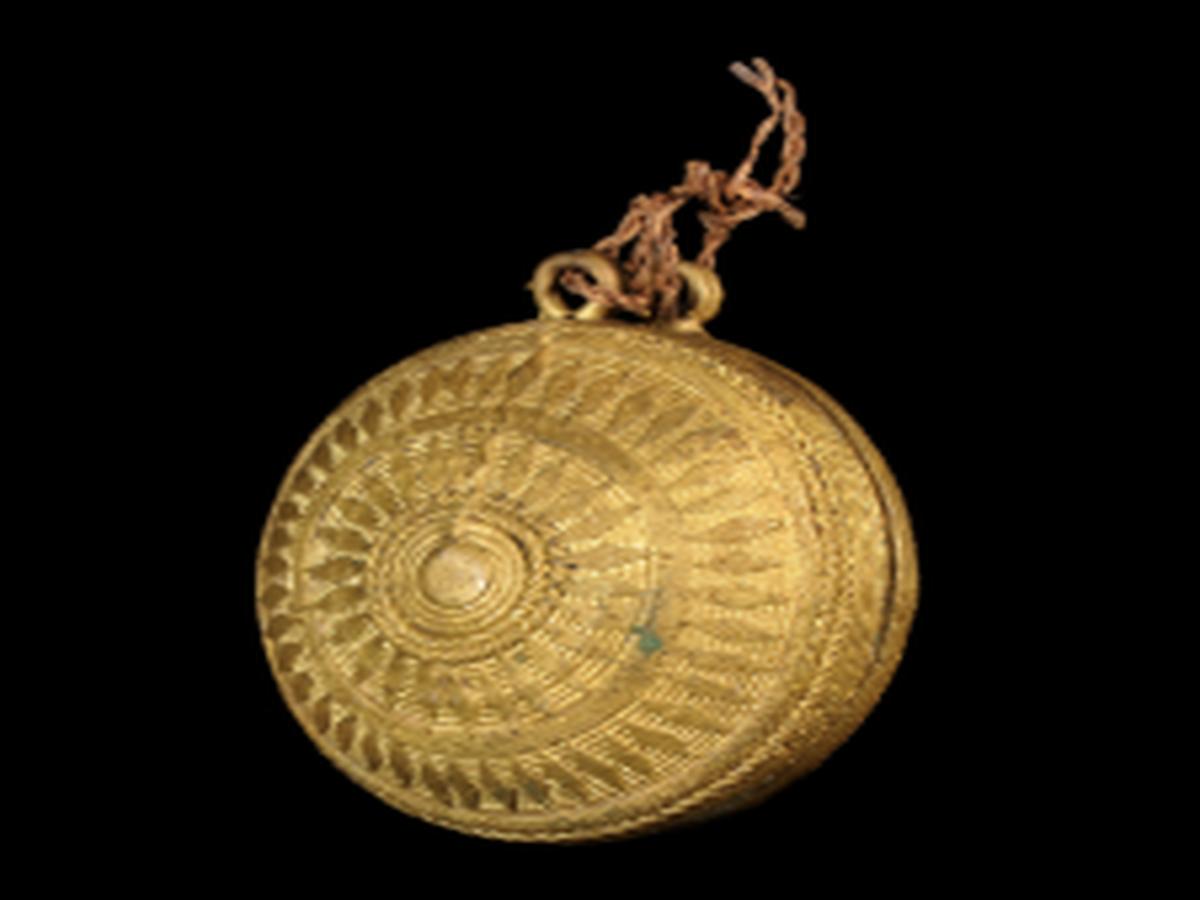State
Tribe Name
Art Type
short description
The Brass Box is one of the exquisite exhibits of traditional metalwork from the Chang Naga tribe, an indigenous community primarily residing in the Tuensang district of the Indian state of Nagaland. The artifact reveals the aesthetic technicality of the tribe and its traditional lime in everyday cultural practices. The whole surface of the container has embossed rhomboid patterns that testify to the detailing skills of Chang artisans. Besides being decorative, these geometric patterns signify the high regard this tribe has for symmetry and design in their artistic approach.
Thumbnail

Filter Postion
Left
Filter Background
Off
Theme
Filter Header Image

content
Image

description
The Brass Box is one of the exquisite exhibits of traditional metalwork from the Chang Naga tribe, an indigenous community primarily residing in the Tuensang district of the Indian state of Nagaland. The artifact reveals the aesthetic technicality of the tribe and its traditional lime in everyday cultural practices. The whole surface of the container has embossed rhomboid patterns that testify to the detailing skills of Chang artisans. Besides being decorative, these geometric patterns signify the high regard this tribe has for symmetry and design in their artistic approach.
Primarily stored in this box is lime-an ingredient that is dully chewed along with betel nut (areca nut)-as this custom is prevalent among almost all Naga tribes with social and ritual significance. The box itself is divided into two halves, each of which has a small ring at its rim. A twisted string passes through these rings to keep the container securely closed and portable. There's also a small round projection on the lid for easy opening. Preserved currently in the Indian Museum, Kolkata, the brass box serves as a reminder of the metallurgical skills of the Chang Naga tribe and their rich cultural traditions. The artifact provides insight not only into the community's cultural and social practices but also into the manifestations of these in material culture
Primarily stored in this box is lime-an ingredient that is dully chewed along with betel nut (areca nut)-as this custom is prevalent among almost all Naga tribes with social and ritual significance. The box itself is divided into two halves, each of which has a small ring at its rim. A twisted string passes through these rings to keep the container securely closed and portable. There's also a small round projection on the lid for easy opening. Preserved currently in the Indian Museum, Kolkata, the brass box serves as a reminder of the metallurgical skills of the Chang Naga tribe and their rich cultural traditions. The artifact provides insight not only into the community's cultural and social practices but also into the manifestations of these in material culture
Image Mode
landscape
Image

description
The Brass Box is one of the exquisite exhibits of traditional metalwork from the Chang Naga tribe, an indigenous community primarily residing in the Tuensang district of the Indian state of Nagaland. The artifact reveals the aesthetic technicality of the tribe and its traditional lime in everyday cultural practices. The whole surface of the container has embossed rhomboid patterns that testify to the detailing skills of Chang artisans. Besides being decorative, these geometric patterns signify the high regard this tribe has for symmetry and design in their artistic approach.
Primarily stored in this box is lime-an ingredient that is dully chewed along with betel nut (areca nut)-as this custom is prevalent among almost all Naga tribes with social and ritual significance. The box itself is divided into two halves, each of which has a small ring at its rim. A twisted string passes through these rings to keep the container securely closed and portable. There's also a small round projection on the lid for easy opening. Preserved currently in the Indian Museum, Kolkata, the brass box serves as a reminder of the metallurgical skills of the Chang Naga tribe and their rich cultural traditions. The artifact provides insight not only into the community's cultural and social practices but also into the manifestations of these in material culture
Primarily stored in this box is lime-an ingredient that is dully chewed along with betel nut (areca nut)-as this custom is prevalent among almost all Naga tribes with social and ritual significance. The box itself is divided into two halves, each of which has a small ring at its rim. A twisted string passes through these rings to keep the container securely closed and portable. There's also a small round projection on the lid for easy opening. Preserved currently in the Indian Museum, Kolkata, the brass box serves as a reminder of the metallurgical skills of the Chang Naga tribe and their rich cultural traditions. The artifact provides insight not only into the community's cultural and social practices but also into the manifestations of these in material culture
Image Mode
landscape
promoted
On
Verified
Off
